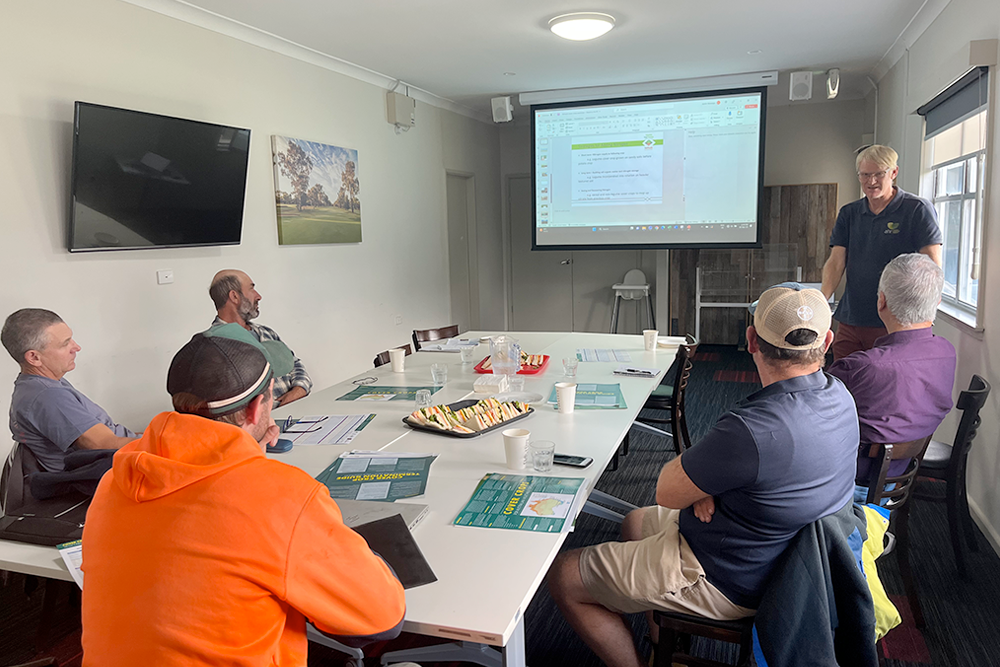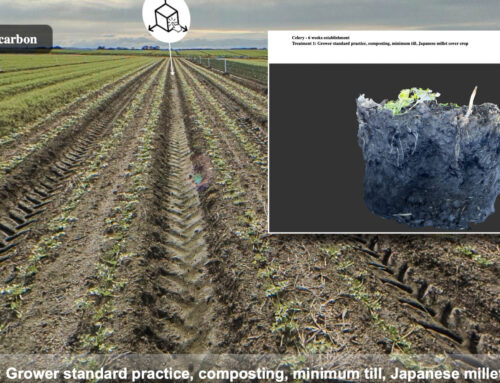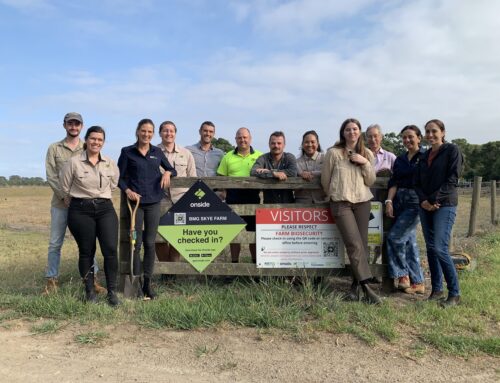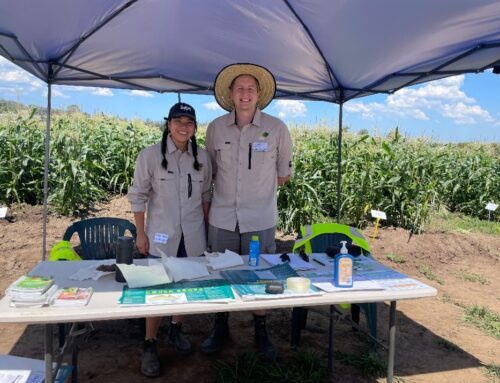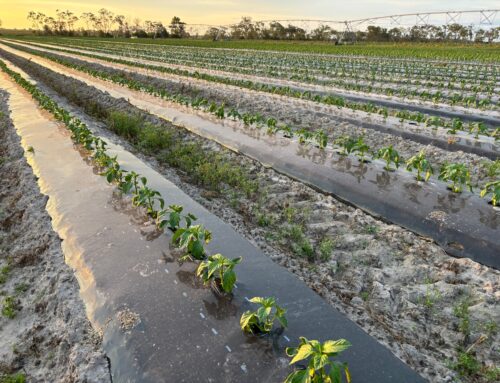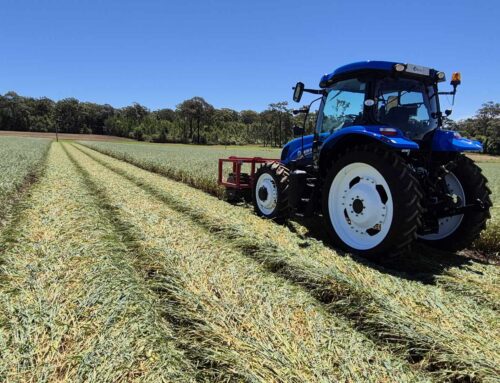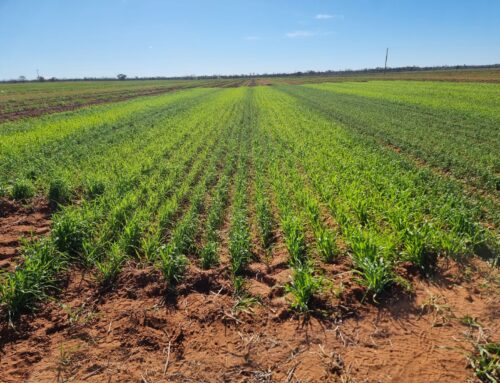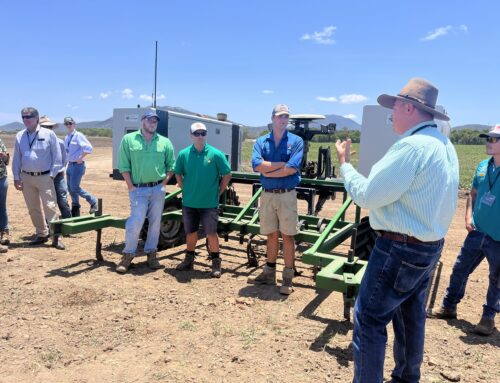In April 2023 several growers and agronomists from the Bathurst region of New South Wales joined the Soil Wealth ICP team for a cover crop coaching clinic, delivered by Dr Kelvin Montagu.
As many of the farmers present – including brassica, sweet corn and beetroot growers – plant cover crops over the winter, the clinic was timely.
All too aware of the dual and related challenges of sustainability and managing ever-exploding input costs, growers were keen to expand their knowledge on cover crops and their potential to add nitrogen and improve land mangement more generally. The potential rise of fall armyworm in the area was also a concern among growers.
Key cover cropping takeaways
During the coaching clinic, Kelvin discussed three strategies to manage nitrogen and organic matter using cover crops including:
- Short-term nitrogen (for example, growing a legume cover crop prior to the cash crop to supply nitrogen to the cash crop)
- Long-term nitrogen and building organic matter (legume cover crop grown and included in the long-term rotation)
- Saving and recovering nitrogen by using cereals in the rotation, which saves nitrate from previous crop and stores as organic nitrogen in crop residues.
Kelvin’s top tips when considering cover crops to supplement nitrogen include:
- Testing the soil prior to planting a cover crop to understand the nitrogen status in the soil. In soils with >25 ppm of nitrate, the legumes can get lazy and nitrogen fixation will decrease; in soils >50 ppm of nitrate, a non-legume cover crop (e.g. cereal) should be considered.
- Inoculating the legume seed with the right rhizobium strain is also vital to ensure maximum nitrogen fixation
- Treat the cover crop like a cash crop: grow it well and it will reward with abundant biomass and therefore more nitrogen.
Other topics of interest included different cover crop termination methods. Mulching and incorporating cover crop biomass into the soil helps to break the residue down quickly. Conversely, spraying with herbicide or rolling, then leaving the cover crop residue on the soil surface promotes slower residue breakdown and can prevent soil erosion and retain soil moisture.
Both scenarios have advantages, and determining which approach is best will depend on each grower’s system and seasonal conditions. For example, in a wet winter, a cover crop can be left to grow longer to draw down moisture.
Also impacting biomass breakdown is soil temperature and moisture. In soil temperatures <10°C – microbes in the soil are not very active; 10-15°C – microbe activity ramps up; and 15°C – the microbes are active).
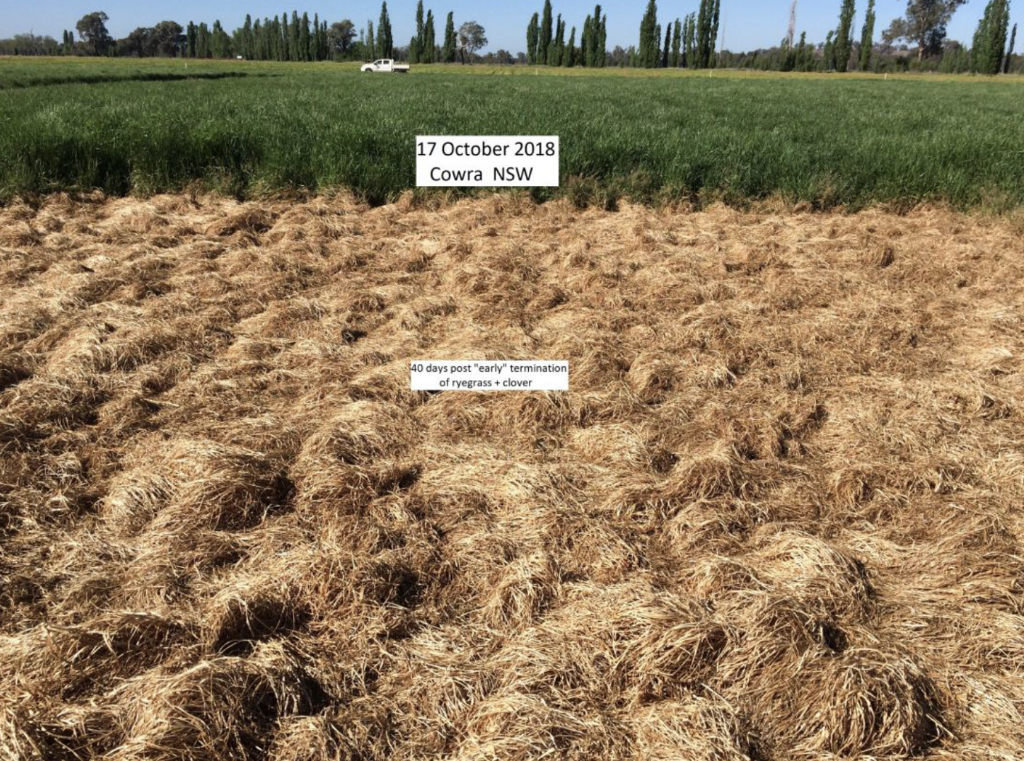
Example of leaving residue on the surface.
Grower insights
Growers in attendance also had the opportunity to share their own experiences including the successes and challenges they have had with cover crops. Crimson clover, red clover, field pea and vetch were common examples of cover crops grown in the Bathurst region.
Some growers had found vetch to be problematic due to the hardiness of the seed, carrying over in the soil when left to mature. They also had issues with vetch when grown in a mix with barley, getting tangled and caught in machinery. Terminating vetch at an earlier growth stage (e.g. flowering) can help to mitigate some of the seed carryover issues experienced, while yielding maximum nitrogen.
Other insights included a handy reminder to avoid baling a legume crop for hay as it removes valuable nitrogen from the field. Others shared their experience of seeing observable benefits to soil structure following a cover crop, with improved aggregate stability which can be verified through a slake test.
Some solutions to the slug and snail pests were also offered, involving baiting the cover crop headlands and running a tillage disc over the area to disrupt and kill the pests.
Positive grower engagement at the clinic was a testament to their willingness to always learn, improve and optimise their operations for the benefit of both their economic and environmental bottom lines.
Using more clovers, adding an oat cover crop over winter and rolling cover crops were some of the future actions that growers were inspired to try after attending the clinic.
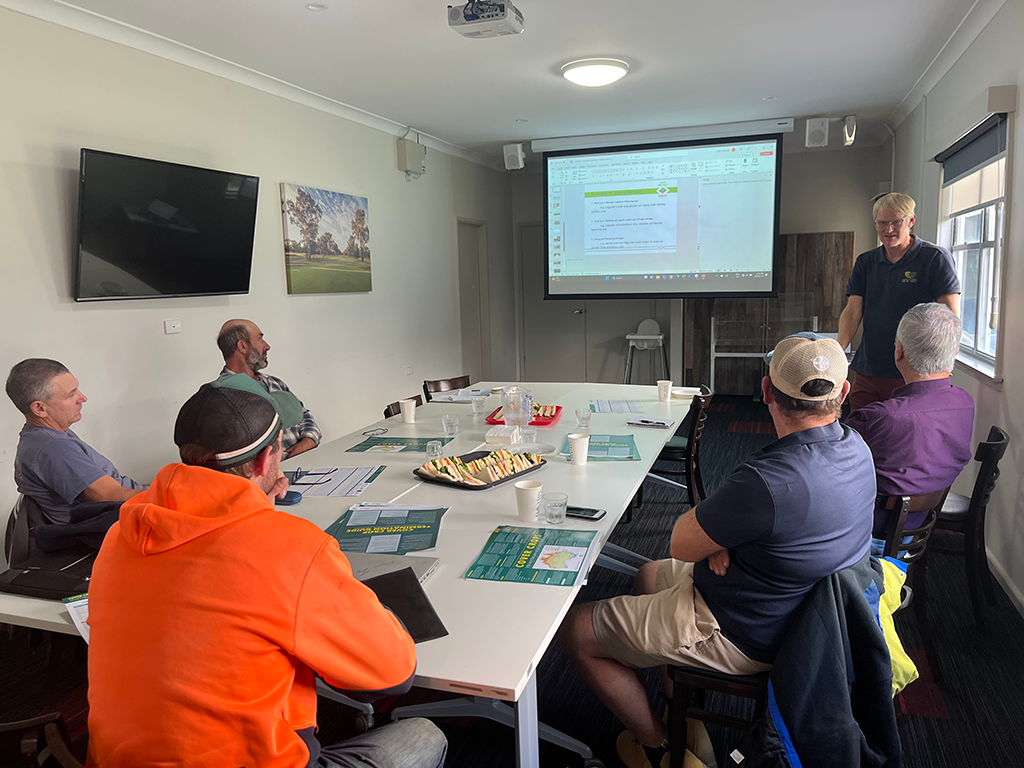
Attendees at the Bathurst cover cropping coaching clinic with Dr Kelvin Montagu (far right).

